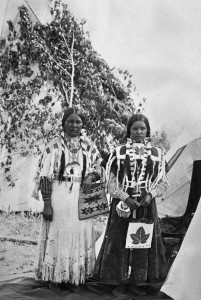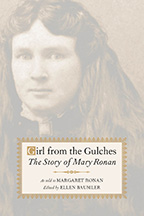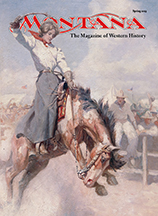Women and Sports: Tracking Change Over Time Lesson Plan
(Designed for grades 4-8) In this lesson aligned to both Common Core ELA and Math standards, students learn about how Title IX (a federal civil rights law enacted in 1972 that prohibits sex discrimination in education) changed girls’ opportunities to participate in school sports by collecting and analyzing the data to look at change in women’s sports participation over time.
Hazel Hunkins, Billings Suffragist: A Primary Source Investigation Lesson Plan
(Designed for grades 7-12) In this lesson, student historians will analyze photos, letters, newspaper articles, and other sources to learn more about the suffrage movement as experienced by Billings, Montana, native and National Woman’s Party activist Hazel Hunkins.
Ordinary People Do Extraordinary Things! Connecting Biography to Larger Social Themes Lesson Plan
(Designed for grades 8-12) This lesson uses essays published on the Women’s History Matters website to help students explore how ordinary people’s lives intersect with larger historical events and trends and to investigate how people’s choices impact their communities. After analyzing two essays on American Indian women from the Women’s History Matters website, students are asked to conduct interviews with people in their own community to learn about how that person has chosen to shape the world around him or her.
Montana Women at Work: Clothesline Timeline Lesson Plan
 (Designed for grades 4-12) This primary-source based lesson asks students to analyze historic photographs to draw conclusions about women and work from the 1870s through the 2010s. Students will discover that Montana women have always worked, but that discrimination, cultural expectations, and changing technology have influenced the types of work women undertook.
(Designed for grades 4-12) This primary-source based lesson asks students to analyze historic photographs to draw conclusions about women and work from the 1870s through the 2010s. Students will discover that Montana women have always worked, but that discrimination, cultural expectations, and changing technology have influenced the types of work women undertook.
New! Montana Women’s Legal History Lesson Plan
(Designed for grades 11-12). In this 1-2 period activity, students will examine sample Montana legislation from 1871 to 1991 that particularly affected women’s lives to explore the impact laws have on the lives of ordinary people and why laws change.
Biographical Poems Celebrating Amazing Montana Women Lesson Plan
(Designed for grades 4-6) This lesson asks students to research specific Montana women (by reading biographical essays) and to use the information they gather to create biographical poems. Through their research (and by hearing their classmates’ poems) they will recognize that there is no single “woman’s experience”; women’s lives are diverse and that people can make a difference in their communities.
A Beautiful Tradition: Ingenuity and Adaptation in a Century of Plateau Women’s Art

(Designed for grades 4-12) These materials are designed to provide you and your students with a way to study this colorful art form while incorporating Indian Education for All in your classroom. There are three grade-appropriate versions of this curriculum: fourth/fifth grade, middle school, and high school. These interdisciplinary units include grade appropriate lesson plans aligned with the Essential Understandings; PowerPoint presentations; worksheets; and other material.
Girl from the Gulches: The Story of Mary Ronan Study Guide
 (Designed for grades 6-10). This study guide includes lesson plans, vocabulary, chapter summaries and questions, alignment to the Common Core, and other information to facilitate classroom use of Girl from the Gulches: The Story of Mary Ronan, as told to Margaret Ronan, edited by Ellen Baumler. Set in the second half of the nineteenth century, this highly readable 222-page memoir details Mary Sheehan Ronan’s journey across the Great Plains, her childhood on the Colorado and Montana mining frontiers, her ascent to young womanhood in Southern California, her return to Montana as a young bride, and her life on the Flathead Indian Reservation as the wife of an Indian agent. Book One, which provides a child’s-eye view of the mining frontier, is available to download as a pdf. Classroom sets of Girl from the Gulches can be purchased from the Montana Historical Society Museum Store by calling toll free 1-800-243-9900.
(Designed for grades 6-10). This study guide includes lesson plans, vocabulary, chapter summaries and questions, alignment to the Common Core, and other information to facilitate classroom use of Girl from the Gulches: The Story of Mary Ronan, as told to Margaret Ronan, edited by Ellen Baumler. Set in the second half of the nineteenth century, this highly readable 222-page memoir details Mary Sheehan Ronan’s journey across the Great Plains, her childhood on the Colorado and Montana mining frontiers, her ascent to young womanhood in Southern California, her return to Montana as a young bride, and her life on the Flathead Indian Reservation as the wife of an Indian agent. Book One, which provides a child’s-eye view of the mining frontier, is available to download as a pdf. Classroom sets of Girl from the Gulches can be purchased from the Montana Historical Society Museum Store by calling toll free 1-800-243-9900.
Montana Biographies
The Montana Historical Society profiled 48 influential Montanans, 24 of whom are women. From linguist Minerva Allen to movie star Myrna Loy and jazz pianist Jean Wrobel, this is a great resource for student research projects.
Oral History in the Classroom
Bring the voices of history into your classroom with these tools. Encourage your students to conduct oral histories with their mothers, aunts, neighbors, and community leaders. Teach them the value of listening as well as critical questioning skills. Consider donating the finished product to your local history museum or to the Montana Historical Society.
Women’s History Articles from Montana: The Magazine of Western History
 Montana: The Magazine of Western History boasts a long tradition of excellence. First published in 1951, the publication prides itself on rigorous peer-reviewed scholarship and on bringing the stories of Montana to its people and to an international audience. Over 130 articles about Montana women are available to download via the Women’s History Matters Project. These historically accurate yet highly readable articles will complement high school U.S. and Montana History lesson plans.
Montana: The Magazine of Western History boasts a long tradition of excellence. First published in 1951, the publication prides itself on rigorous peer-reviewed scholarship and on bringing the stories of Montana to its people and to an international audience. Over 130 articles about Montana women are available to download via the Women’s History Matters Project. These historically accurate yet highly readable articles will complement high school U.S. and Montana History lesson plans.
Online Streaming Video Resources
The WHM project has compiled a list of streaming videos which could be used in the classroom, including several lectures and events taped by the MHS and uploaded to Youtube. The list also contains several PBS Montana programs, including Evelyn Cameron: Pictures From a Worthy Life and Playing for the World, the story of the Fort Shaw women’s basketball team.